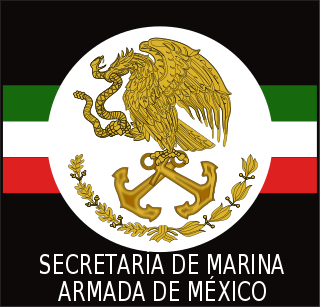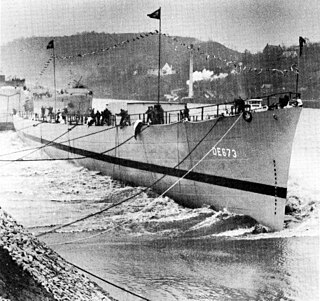 | |
| History | |
|---|---|
| Name: | USS Joseph M. Auman (DE-674) |
| Namesake: | Joseph M. Auman |
| Builder: |
|
| Laid down: | 8 November 1943 |
| Launched: | 5 February 1944 |
| Sponsored by: | Mrs. Bernard Tommey |
| Reclassified: | APD-117, 17 July 1944 |
| Commissioned: | 25 April 1945 |
| Decommissioned: | 10 July 1946 |
| Struck: | 12 December 1963 |
| Fate: | Sold to Mexican Navy, 12 December 1963 |
| History | |
| Name: | ARM Tehuantupec (H05) |
| Namesake: | Gulf of Tehuantepec |
| Acquired: | 12 December 1963 |
| Struck: | 1989 |
| Fate: | sold for scrapping, 1989 |
| General characteristics | |
| Class and type: | Rudderow-classdestroyer escort, as ordered |
| Class and type: | Crosley-classhigh speed transport, as completed |
| Displacement: | 2,130 long tons (2,164 t) full |
| Length: | 306 ft (93 m) |
| Beam: | 37 ft (11 m) |
| Draft: | 12 ft 7 in (3.84 m) |
| Speed: | 23 knots (43 km/h; 26 mph) |
| Troops: | 162 |
| Complement: | 204 |
| Armament: |
|
USS Joseph M. Auman (APD-117), was a Crosley-class high-speed transport commissioned in the United States Navy from 1945 to 1946. In 1963, she was transferred to the Mexican Navy and served as ARM Tehuantupec (H05) until 1989. Afterwards, she was scrapped.

Crosley-class high speed transports were high speed transport ships that served in the United States Navy during World War II. Some stayed in commission long enough to serve in the Korean War and the Vietnam War. All of them were converted from Rudderow-class destroyer escorts during construction except for USS Bray (APD-139), which was converted a year after her construction. After World War II ended, several of the ships were sold to Mexico, South Korea, Taiwan, and Colombia.

The United States Navy (USN) is the naval warfare service branch of the United States Armed Forces and one of the seven uniformed services of the United States. It is the largest and most capable navy in the world and it has been estimated that in terms of tonnage of its active battle fleet alone, it is larger than the next 13 navies combined, which includes 11 U.S. allies or partner nations. with the highest combined battle fleet tonnage and the world's largest aircraft carrier fleet, with eleven in service, and two new carriers under construction. With 319,421 personnel on active duty and 99,616 in the Ready Reserve, the Navy is the third largest of the service branches. It has 282 deployable combat vessels and more than 3,700 operational aircraft as of March 2018, making it the second-largest air force in the world, after the United States Air Force.

The Mexican Navy is one of the two independent armed forces of Mexico. The actual naval forces are called the Armada de México. The Secretaría de Marina (SEMAR) includes both the Armada itself and the attached ministerial and civil service. The commander of the Navy is the Secretary of the Navy, who is both a cabinet minister and a career naval officer.































